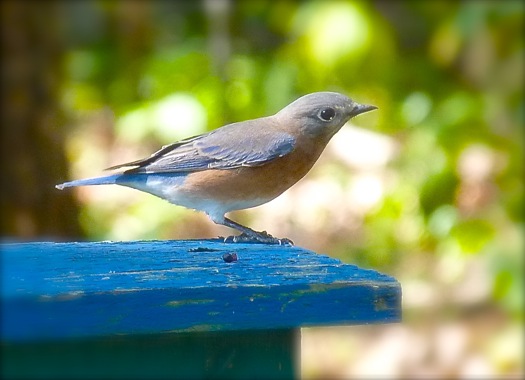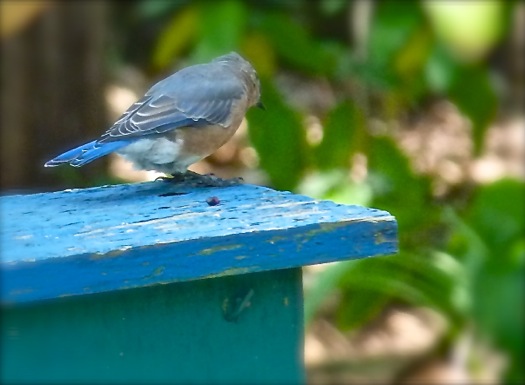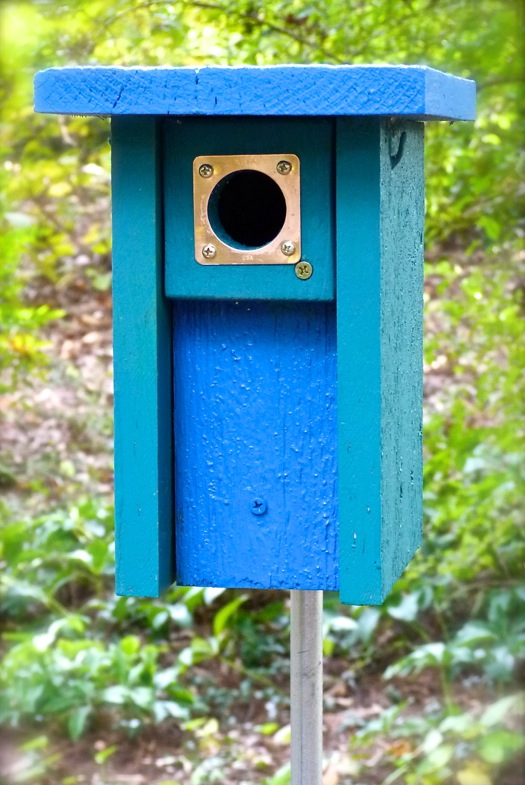Searching for a New Home
 Saturday, November 21, 2015 at 6:40PM
Saturday, November 21, 2015 at 6:40PM A flash of blue wings outside the kitchen window caught my attention this week, and I stopped what I was doing to look. At least a half dozen male bluebirds were flying about, taking turns checking out a new birdhouse mounted only a few feet from the glass doors to the kitchen.When I bought the flashy red abode with metal roof and grand iron columns on each side of the entrance, I thought only about its decorative value. I already have birdhouses scattered over the property, and most of them have been occupied in past seasons by a variety of birds, including bluebirds, wrens, titmice, and chickadees. But this one was primarily ornamental, and I gave little thought to what critter would be attracted to it.
Nevertheless, the bluebirds were checking it out, and they completely ignored another birdhouse a few feet away, also decorative but not as ostentatious. Bluebirds do see colors, and I know they are drawn to the cobalt blue house next to the arbor garden. I did not know they also love red!
I was amazed that all these male birds took turns looking it over, having heard through avian real estate channels about the latest addition to the neighborhood. No one tried to chase another away, and they were quite orderly. They even allowed a little yellow warbler to have a turn! This was obviously an open house affair. Perhaps the rusty bird on the back of the birdhouse was a draw.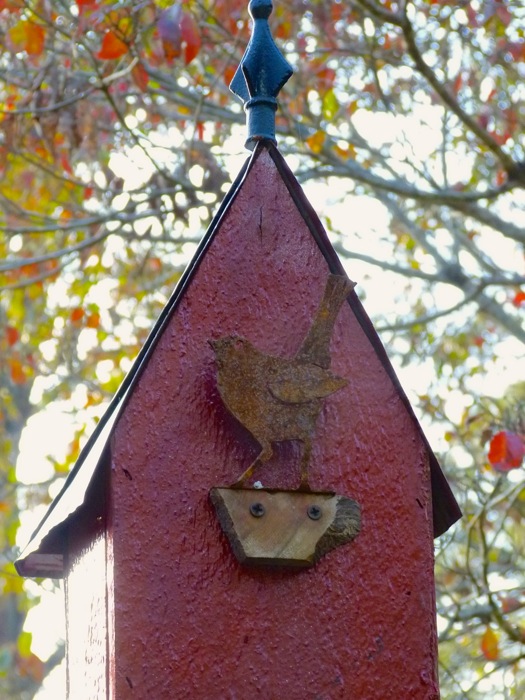 Maybe, like a lot of humans, they were curious after hearing rumors about a new house and wanted to see details for themselves. It was remarkable to me that the bluebirds not only arrived together, but departed all at the same time, too!
Maybe, like a lot of humans, they were curious after hearing rumors about a new house and wanted to see details for themselves. It was remarkable to me that the bluebirds not only arrived together, but departed all at the same time, too!
Birds often choose their nesting boxes ahead of time. They may select several sites and then allow the female to make the final decision. It will be interesting to see who actually ends up in the red house come spring.
It may not be a bird! I once had an anole lizard lay claim to a birdhouse, and he stayed there throughout the summer. So I was not surprised later that day to see this fellow, with his chameleon-like body assuming the exact colors of the rusty accessories.: An anole lizard checks out the new red birdhouse.
An anole lizard checks out the new red birdhouse.
Of course, not all birds nest in boxes. Many are do-it-yourselfers, preferring to make their own nests. I caught this hawk with talons full of leaves, destined to be used as building material: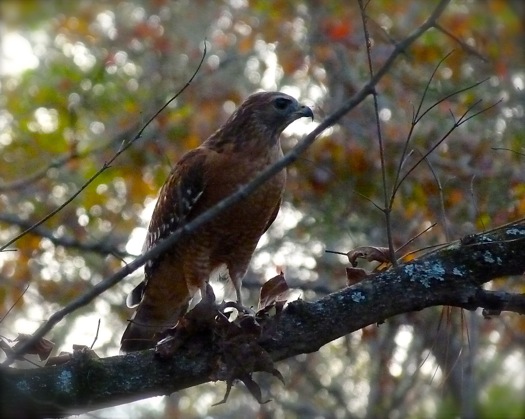 With winter yet to come, these birds are already planning for spring. Or maybe those bluebirds were thinking of winter after all. During severe winter weather, birds often will crowd together in a sturdy house for protection from the elements. Whatever they do, I will have a front row seat from the comfort of my kitchen.
With winter yet to come, these birds are already planning for spring. Or maybe those bluebirds were thinking of winter after all. During severe winter weather, birds often will crowd together in a sturdy house for protection from the elements. Whatever they do, I will have a front row seat from the comfort of my kitchen.
